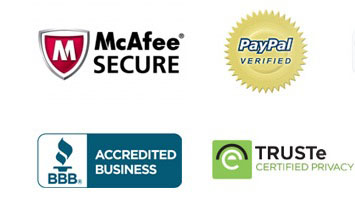Where does your marketing strategy begin online? If you said with your website, you’re correct.
In today’s world, your website is as crucial as your business card or your telephone number. Try operating without a strong web presence; your competition will quickly pull ahead if you try and go without one.
But what does it take to have a strong web presence? How can your website add credibility to your web marketing strategy?
Credibility shows your trustworthy. The definition states it’s the act or quality of being convincing or believable. And when it comes to your website, that opinion is formed in a mere few seconds of visiting.
Ever searched for something, clicked on the result, and pulled a site that looks like it was built twenty years ago? You probably couldn’t back out fast enough.
Or how about a site that won’t load. The graphics take precious seconds to load; precious second the site owner doesn’t have from their viewers.
Trusted brands come in all shapes and sizes. They’re the biggest names in the business: Amazon, Walt Disney, IBM. But their also more moderate sized businesses that create a stir within their industries. Businesses that have grown their credibility by being conscious of the way their brand appears in everything they do.
Including the online world.
If a visitor sees a red flag on your website, they’re gone.
What’s worse, you may not even realize they were there.
But don’t worry. That’s what we’re going to define right here.
First, let’s define why all of this is important. Why should you care?
Two reasons.
- Your customers and prospects care.
- Google cares.
Google uses algorithms to rank every webpage currently online. And while that is proprietary information, we know it involves many different things.
Like the content on your site. Or the trust of the host domain. Or the quality of your traffic. Or your on-page keyword usage. Or the link popularity of a link on a specific page.
Google won’t rank sites that aren’t high on the credibility factor. They want to provide high-quality results. And credibility wins every time.
So where should you put your focus when designing and maintaining your website?
Highlight your customer service options
If someone is visiting your site and has a question, they shouldn’t have to hunt for a way to connect with you.
All of your information should be easily available in all kinds of formats. Built it into your template, so it’s at the top of every page. Put call-to-action buttons on many of your best landing pages. How about a fill-out form where they can request more information? Or even a chat pop-up where they can have instant access to you whenever they desire?
Don’t hide your contact information. Don’t make people hunt for what they want.
Don’t keep some of your contact information off of your site or make it difficult to find. While different forms of contact are appropriate in different places, any visitor should have access to your physical address, email address, phone number, links to social sites, and other contact information from different places on your site.
Give them options. Make it easy.
And reap the rewards.
Reviews and testimonials
Showcasing reviews and testimonials makes good business sense and provides social proof. This is especially true if you can get a testimonial from someone respected within your community. (Yes, there is something about celebrity endorsements.)
Many business owners shy away from reviews, concerned for the occasional negative comment that may pop up too. As a business owner, you realize you’ll have a full spectrum of clientele; some will love you, and some, not so much. That’s life.
But what matters most is how you treat both types of reviews.
If all you have is glowing reviews, you’ll appear fake. People know that businesses deal with the good and the bad. And sometimes seeing how you deal with the bad can be equally as important.
This is how customers build up their confidence to do business with you.
Security badges
You’ve seen them. Security badges that verify you are using secure practices on your website. These include things like a PayPal verified seal, a Norton Antivirus seal, or even the little “lock” feature located in your search bar for every page you visit.
People notice. And if you’re smart about your web marketing, you’ll ensure you put a variety of these on your site.
Dig Deeper
Why Digital Ads Work
Are You Using Responsive Display Ads In Your Digital Marketing Strategy?
Awards
Your website is also a great place to show off your awards.
These can be anything from your local, regional, national, or international sources. They can be from community organizations or specific to your industry.
Even if you won an award several years ago, put it up on your site. If you create a special page on your site, you can work on updating and adding more things to it over time.
This is what makes your “About Us” section more complete. This is what helps build your history over time. And when people compare you to a company that’s brand new, your history can be a very big deal.
Content, Content, Content
The days of five page sites are long gone. People want depth in the company sites they visit.
That means creating content in every aspect of your business. That’s what blogging is best at doing.
But it’s not always about what you have to say. Sometimes some of your best posts can come from others too.
Who do you work with in the community as a partner company? A flooring company might make referrals regularly to an eco-friendly carpet cleaner. Why not have a representative from the carpet cleaning company write a guest post?
By allowing other people to contribute to your website, you show visitors that someone else is willing to associate their name with your brand.
This also gives you a chance to get your name exposed to a wider target audience. Who do you think the carpet cleaner will refer when his favorite client is looking for an upgrade?
Design Matters
This should be a no-brainer. A professional site means your visitors will have more trust.
But that doesn’t mean you have to go overboard with the bells and whistles. A simple, clean design will do equally well.
Visitors want a professional look. They want easy navigation. They want quick loading features. They want useful information.
And the simpler you make it, the bigger the impact.




